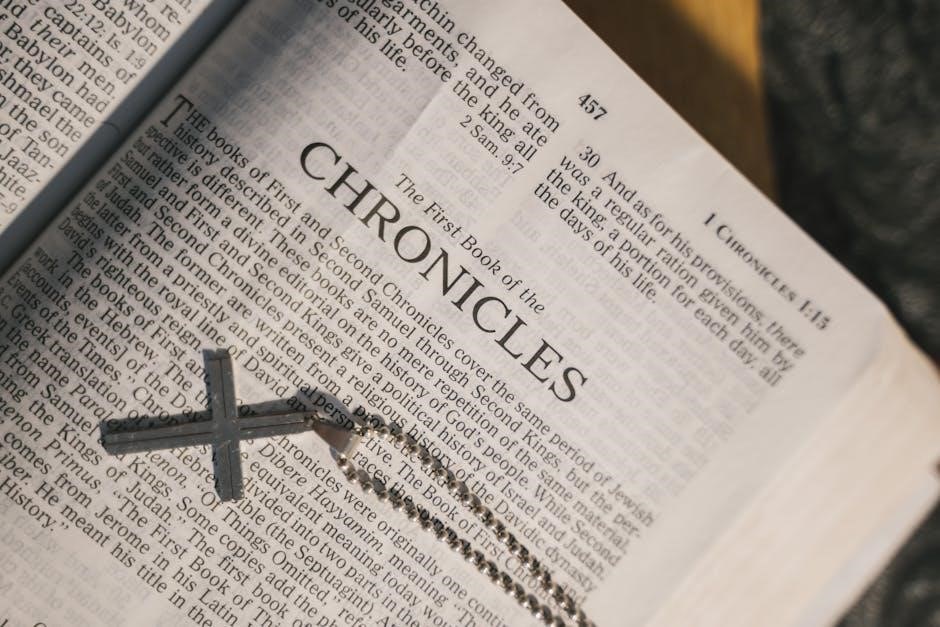A holographic will, or testament olographe, offers a cost-effective and flexible way to outline final wishes. This article explores its legal aspects, drafting tips, and provides a downloadable PDF template for ease of use.
Legal Status and Recognition
A holographic will is legally recognized in France as one of four valid types, requiring no witnesses, and must be entirely handwritten, dated, and signed for validity.
Definition of a Holographic Will
A holographic will, known as a testament olographe in French, is a type of will that must be entirely handwritten by the testator. It requires no witnesses or notary involvement, making it a private and accessible option for individuals to outline their final wishes. The will must be dated and signed by the testator to be considered valid, and it automatically revokes all previous wills. This form of will is recognized in France as one of the four valid types and is appreciated for its simplicity, cost-effectiveness, and flexibility. Unlike other wills, it allows individuals to manage their estate distribution without formal legal proceedings, appealing to those who prefer a straightforward and personal approach to their legacy planning.
Legal Requirements
To ensure validity, a holographic will must adhere to specific legal standards. It must be entirely handwritten by the testator from start to finish. The use of a computer or typewriter is strictly prohibited, even for dates or names. The will must include the testator’s full name, date of birth, and address to establish identity. It should also be dated and signed by the testator to confirm authenticity. Additionally, the will must explicitly state that it revokes all prior testamentary dispositions. Legal requirements emphasize clarity and precision to avoid ambiguities, ensuring the document reflects the testator’s true intentions. Proper execution of these requirements is crucial for the will to be recognized as valid and enforceable under French law, particularly when it is registered in the Central File of Last Wishes.
Jurisdictional Variations
The legal recognition of holographic wills varies significantly across jurisdictions. In France, holographic wills are fully recognized and must be entirely handwritten, dated, and signed to be valid. However, other countries may have different requirements or restrictions. For instance, in some U.S. states, holographic wills are recognized, while in others, they are not. International implications further complicate matters, as a will valid in one country may not be recognized in another. For individuals with assets or heirs across borders, it is crucial to consult legal professionals to ensure compliance with local laws. In the European Union, while France accepts holographic wills, other member states may require additional formalities, such as notarization or witnesses. Understanding these variations is essential to ensure the will’s enforceability across jurisdictions.
Drafting a Holographic Will
Drafting a holographic will requires careful attention to detail. It must be entirely handwritten, dated, and signed to ensure validity. Avoid errors or omissions to prevent legal challenges.
Handwritten Requirement
The handwritten requirement is a critical element of a holographic will. The entire document must be written by hand, ensuring authenticity and compliance with legal standards. This personal touch eliminates the need for notarization or witnesses, making the process more accessible. However, it also means careful attention must be paid to avoid mistakes, as even minor errors could lead to legal disputes. The handwritten nature of the will serves as proof of the testator’s intent and identity, reinforcing its validity under the law.
Date and Signature
Dating and signing the holographic will are essential steps to ensure its validity. The date must be clearly written at the time of drafting, providing a precise record of when the will was created. The signature should be full, matching the testator’s legal name, and placed at the end of the document. These elements confirm the testator’s intent and identity, preventing potential disputes. Without a proper date and signature, the will may be deemed invalid, highlighting their importance in maintaining the document’s legal standing and protecting the testator’s wishes.
Content Guidelines
The content of a holographic will must be clear, specific, and unambiguous to ensure legal validity. It should outline the testator’s intentions regarding asset distribution, heirs, and any specific bequests. The will should include designations for executors, guardians for minor children, and instructions for property management. Avoid using legal jargon or overly complex language, as this could lead to misinterpretation. Ensure all provisions are logically organized and free from contradictions. It is crucial to avoid alterations or strikeouts, as they may invalidate the document. Clarity and precision are paramount to prevent disputes among beneficiaries. If the estate is complex, consulting a legal professional is advisable to ensure all aspects are adequately addressed. This ensures the testator’s wishes are respected and carried out without ambiguity.
Common Mistakes to Avoid
When drafting a holographic will, several pitfalls must be avoided to ensure its validity. One common mistake is failing to handwrite the entire document, as typed or printed sections may invalidate the will. Another error is omitting the date and signature, which are essential for legal recognition. Ambiguous or unclear language can lead to disputes, so it is crucial to be precise and avoid legal jargon. Additionally, crossing out or altering text can raise questions about the testator’s intent and may result in the will being contested. Failing to mention all assets or beneficiaries can also cause issues. Finally, neglecting to register the will with a notaire or central registry increases the risk of the document being lost or overlooked after the testator’s passing. Addressing these issues ensures the will is enforceable and reflects the testator’s true wishes.
Optional Professional Review
While a holographic will does not require professional involvement, consulting a notary or attorney can provide peace of mind. A legal expert ensures the document meets jurisdictional requirements and avoids common pitfalls. They can verify the will’s clarity and completeness, reducing the risk of disputes. Professional review also helps protect against potential challenges by ensuring all legal formalities are met. Additionally, a notary can assist in registering the will in the central registry, ensuring it is easily accessible after death. This step is particularly beneficial for complex estates or when there are potential family conflicts. Although optional, professional oversight enhances the will’s enforceability and ensures the testator’s intentions are respected. It is a prudent step for those seeking reassurance without the cost of a fully notarized will.

Example of a Holographic Will
A downloadable PDF template is available, offering a structured format for creating a holographic will. It includes sections for personal details, asset distribution, and executor appointments, ensuring clarity and completeness.
Structure of the Will
A holographic will typically includes a clear opening statement, followed by specific instructions for asset distribution. It should detail the testator’s personal information, such as name, date of birth, and address. The will must explicitly revoke all prior testamentary dispositions to avoid conflicts. Provisions for spouses, children, and other beneficiaries are outlined, often with options like usufruct rights or outright ownership. Special clauses, such as guardianship for minors, may also be included. The document must be entirely handwritten, dated, and signed to ensure validity. Witnesses are not required, but their inclusion can enhance credibility. Clarity and precision are essential to prevent legal challenges. The will should also state the testator’s sound mental capacity at the time of writing. Proper formatting and adherence to legal standards ensure the document is recognized as valid upon the testator’s passing.
PDF Template
A PDF template for a holographic will provides a structured format to guide individuals in creating their testament. These templates are widely available online and typically include sections for personal details, beneficiary designations, and special instructions. They often feature placeholders for the testator’s name, date of birth, and address, ensuring clarity and organization. The template may also outline specific clauses, such as usufruct rights for a spouse or guardianship arrangements for minor children. Instructions for completing the document, like the requirement for handwritten execution and signature, are usually included. Some templates offer flexibility, allowing users to modify sections according to their needs. Importantly, these templates emphasize the need for the document to be entirely handwritten and properly signed to maintain legal validity. They serve as a practical tool for individuals seeking to draft a legally recognized holographic will without professional assistance.
Advantages of a Holographic Will
A holographic will is cost-effective, requiring no legal fees, and offers simplicity and flexibility. It allows individuals to manage their estate privately without needing a notary.
Cost-Effectiveness
A holographic will is highly cost-effective as it eliminates the need for legal fees or notary costs. It allows individuals to create a will independently, saving money while ensuring their wishes are documented. The process is straightforward, requiring no professional involvement, making it an affordable option for estate planning. Additionally, free templates, such as the testament olographe PDF, are widely available online, further reducing costs. This accessibility ensures that anyone can prepare a valid will without financial burden, maintaining privacy and control over their estate distribution.
Simplicity and Flexibility
Holographic wills are celebrated for their simplicity and flexibility, allowing individuals to outline their wishes in a straightforward manner. Unlike formal wills, they require no legal jargon, making it easier for people to express their intentions clearly. The flexibility lies in the ability to update or revoke the will at any time without complex procedures. This makes it ideal for those who want to make quick adjustments or prefer an uncomplicated estate planning process. Moreover, the availability of PDF templates, such as the testament olographe, provides a structured yet adaptable framework, ensuring that the document remains both legally valid and personally tailored to one’s needs. This ease of use empowers individuals to manage their estate planning independently.
Disadvantages and Risks
Holographic wills lack formality, raising risks of disputes due to unclear handwriting or ambiguities. Errors or omissions can lead to legal challenges, potentially invalidating the document.
Lack of Formality
A key disadvantage of a holographic will is its lack of formality, which can lead to legal challenges. Unlike notarized wills, it doesn’t require witnesses or official verification, increasing the risk of disputes. Handwritten wills may suffer from illegibility, missing signatures, or unclear language, potentially invalidating the document. Without formal oversight, errors or omissions are more likely, and the absence of legal guidance raises the chance of unintended consequences. Additionally, the informal nature of holographic wills can make them easier to lose or damage, further complicating their execution. While the flexibility is an advantage, the lack of structure and professional review can lead to significant legal and familial conflicts. Ensuring clarity and completeness is essential to mitigate these risks.
Risk of Disputes
A holographic will carries a heightened risk of disputes due to its informal nature. Handwritten wills often lack the clarity and precision of formally drafted documents, leading to ambiguities in interpretation. Family members or beneficiaries may challenge the will’s validity, citing issues like illegible handwriting, unclear language, or missing formalities such as witness signatures. Disputes may also arise over the distribution of assets, particularly if the will’s instructions are vague or open to multiple interpretations. Without professional oversight, even minor oversights can escalate into legal battles, delaying the settlement of the estate and straining family relationships. This vulnerability to contests underscores the importance of careful drafting and, when possible, professional review to minimize potential conflicts.

Special Considerations
Special considerations for holographic wills include international implications, ensuring compliance with foreign laws for assets abroad. Digital copies can prevent loss but cannot replace the original document. Clarity is crucial to avoid disputes.
International Implications
Holographic wills have international implications, as their recognition varies across jurisdictions. While valid in many countries, requirements for form and execution differ. For individuals with assets abroad, ensuring compliance with local laws is crucial. Conflict of laws principles may apply, where the jurisdiction of asset location determines inheritance rules. This can lead to complexities, especially if the will does not meet foreign legal standards. It is advisable to consult legal professionals in each relevant jurisdiction to ensure the will’s validity and prevent potential disputes. Additionally, international treaties or conventions may influence the enforceability of holographic wills in certain regions. Proper planning and legal review are essential to safeguard the testator’s wishes across borders.
Digital Copies
Digital copies of holographic wills raise unique legal and practical concerns. While the original handwritten document is typically required for probate, digital versions can serve as useful backups. Storing a PDF copy in a secure, accessible location, such as a safety deposit box or with a trusted individual, ensures the will is not lost or destroyed. However, the digital copy must be an exact replica of the original, including the testator’s handwriting and signature. Some jurisdictions may accept digital copies under specific conditions, but their enforceability varies widely. It is essential to consult local laws and consider professional advice to ensure the digital copy complements, rather than complicates, the administration of the estate. Proper storage and documentation are key to maintaining its validity and accessibility when needed.

Registration of a Holographic Will
Registering a holographic will ensures it is recognized and accessible after death. It typically involves submitting the document to a central registry or notary for formal recording and verification.
Importance
Registering a holographic will is crucial for ensuring its legal recognition and enforceability. It guarantees that the document is formally acknowledged and stored securely, reducing the risk of loss or dispute. By registering the will, the testator ensures that their wishes are respected and carried out as intended. This step also provides clarity for heirs and executors, minimizing potential conflicts. Registration serves as a safeguard against the will being overlooked or challenged, ensuring that the estate is managed according to the testator’s desires. It is a proactive measure to protect the integrity of the will and provide peace of mind for all parties involved.
Process
Registering a holographic will involves submitting the document to a notary, who verifies its authenticity and ensures it meets legal requirements. The notary then records the will in the Central File of Last Wishes, a national registry. This process ensures the will is legally recognized and easily accessible to executors or heirs after the testator’s death. The notary retains a copy, and the original is returned to the testator. Registration provides proof of the will’s existence and helps prevent disputes. It is a straightforward procedure that guarantees the testator’s wishes are formally documented and respected. This step is essential for the smooth execution of the estate and offers peace of mind for all parties involved.

Implications and Consequences
A holographic will has significant legal implications, ensuring the testator’s wishes are binding. It can also impact family dynamics, potentially leading to disputes if not clearly or fairly executed.
Legal Implications
A holographic will, or testament olographe, must be entirely handwritten, dated, and signed to be legally valid. It allows individuals to express their final wishes without formalities, but errors can lead to disputes. Proper execution ensures enforceability, avoiding legal challenges. Registration with a notaire is crucial for recognition. If not registered, the will may be lost or overlooked, causing legal complications. Legal implications include the potential for disputes among heirs, especially if the will is unclear or contested. Ensuring compliance with legal standards is vital to prevent conflicts and safeguard the testator’s intentions. This format provides a straightforward way to outline wishes, but careful drafting is essential to avoid legal issues and ensure the will is respected. Proper legal compliance ensures the document’s validity and prevents potential disputes among beneficiaries.
Family Dynamics
A holographic will can significantly impact family relationships, particularly when it comes to inheritance. It allows individuals to protect a surviving spouse by granting them usufruct rights while ensuring children receive the nude ownership of assets. This balance helps prevent conflicts and ensures fairness. However, if the will is unclear or favors one beneficiary over others, it may lead to disputes. The ability to appoint a guardian for minor children adds another layer of control over their future. Properly structuring the will can safeguard family harmony by addressing potential tensions. It is crucial to clearly outline wishes to avoid misunderstandings and legal challenges. This approach ensures that the testator’s intentions are respected while maintaining familial balance and avoiding prolonged disputes. A well-drafted holographic will can provide peace of mind for all parties involved.
A holographic will, or testament olographe, offers a straightforward and cost-effective way to outline final wishes. Its simplicity allows individuals to manage their estate without formalities, ensuring flexibility and personal control. However, careful drafting is essential to avoid legal challenges; Consulting a professional, while optional, can help prevent disputes and ensure compliance with legal requirements. The ability to protect a surviving spouse and secure future generations highlights its practicality. Despite its advantages, the lack of formality poses risks, making clarity and precision crucial. Ultimately, a well-structured holographic will provides peace of mind, ensuring one’s intentions are respected. It remains a viable option for those seeking simplicity and autonomy in estate planning. Proper execution and registration are key to its validity and effectiveness.

Additional Resources
For further guidance, visit CorrigeTonImpot.fr for free PDF templates. Additional legal resources are available on official notarial websites.
Where to Find More Information
Additional resources on holographic wills can be found on legal websites such as CorrigeTonImpot.fr, which offers detailed guides and downloadable PDF templates. Official notarial websites and legal consultancies also provide comprehensive information. For personalized advice, consulting a notary or legal expert is recommended to ensure compliance with local laws. These resources cover topics like drafting, signing, and registering holographic wills, as well as avoiding common pitfalls. They often include sample templates and step-by-step instructions to help individuals create valid and enforceable documents. Utilizing these resources ensures that your will is legally sound and aligns with your specific needs and circumstances.
